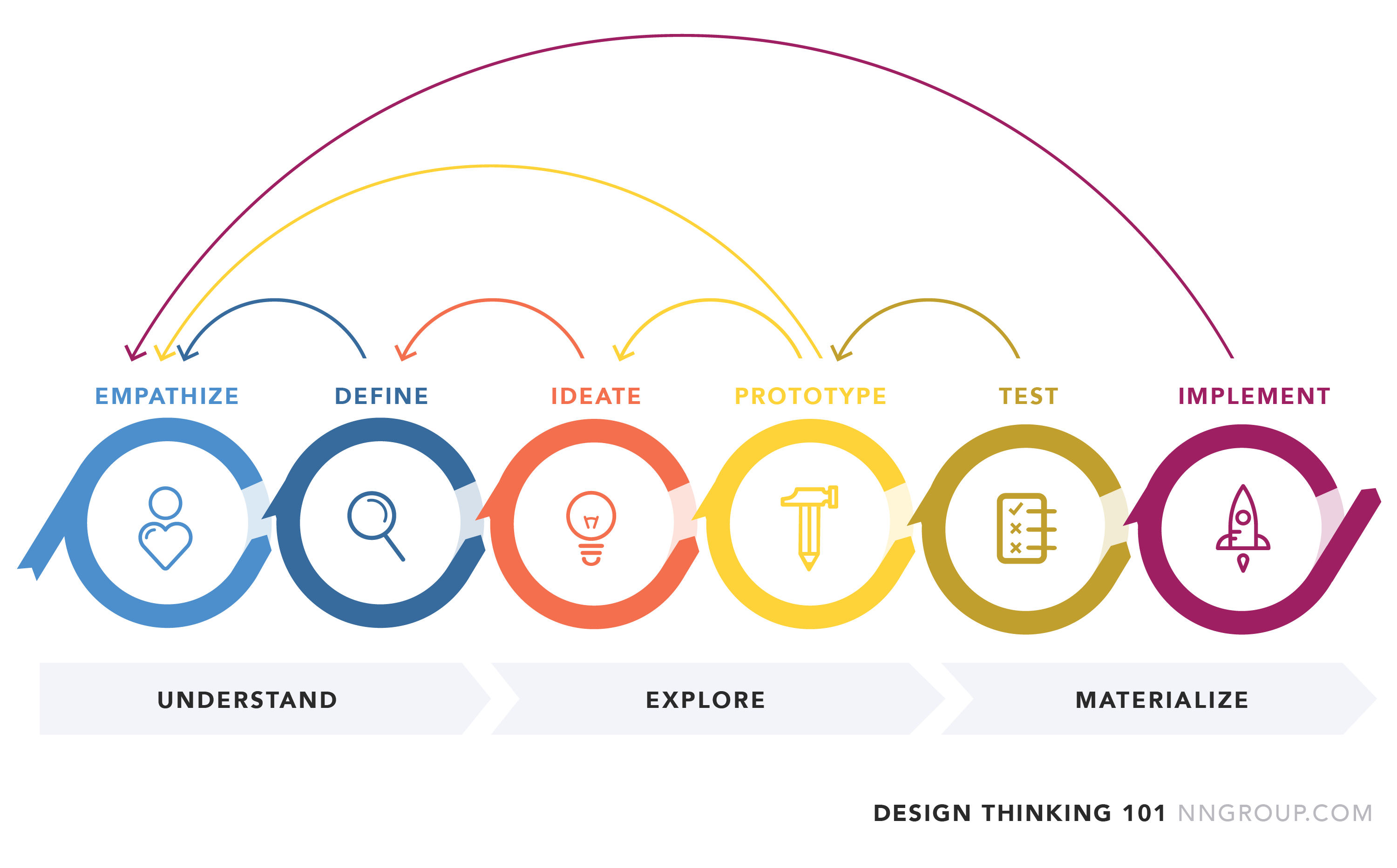Design thinking in Product Development
Design thinking is a problem-solving approach that involves a combination of tools and methods. The specific tools used may vary depending on the context and the problem being addressed, but here are some common tools involved in the design thinking process:
- Empathy mapping: A tool used to understand the needs, emotions, and behaviors of users. It involves creating a visual representation of the user's experience and identifying pain points, desires, and motivations.
- Customer journey mapping: A tool used to map out the entire user journey, from initial awareness to post-purchase support. It helps identify opportunities to improve the user experience at each touchpoint.
- Ideation techniques: These are creative tools used to generate a wide range of ideas. They include brainstorming, mind mapping, and SCAMPER (Substitute, Combine, Adapt, Modify, Put to another use, Eliminate, Rearrange).
- Prototyping: A tool used to quickly create low-fidelity models of a product or service. It helps designers and stakeholders visualize and test potential solutions before investing significant time and resources.
- User testing: A tool used to validate solutions by testing them with users. It involves gathering feedback from users and using it to refine the design.
- Design sprints: A structured process used to rapidly develop and test solutions over the course of a week or less. It involves cross-functional teams working together to ideate, prototype, and test potential solutions.
These tools can be used individually or in combination to support the design thinking process and help teams develop innovative solutions that meet the needs of their users.
Design thinking is a problem-solving approach that emphasizes a user-centered, iterative, and collaborative process. Here are some principles of design thinking:
- Human-centered: Design thinking focuses on understanding and empathizing with users to create solutions that meet their needs and desires.
- Iterative: Design thinking is a process of experimentation and iteration. Solutions are tested and refined based on user feedback.
- Collaborative: Design thinking involves working in cross-functional teams to bring together diverse perspectives and expertise.
- Creative: Design thinking encourages creativity and out-of-the-box thinking to generate innovative solutions.
- Prototyping: Design thinking involves creating prototypes and models to visualize and test potential solutions.
- Bias towards action: Design thinking emphasizes taking action and trying things out rather than getting stuck in analysis paralysis.
- Mindset of learning: Design thinking encourages a growth mindset and a willingness to learn from failure and mistakes.
By following these principles, design thinking can help teams develop user-centric solutions that are effective, innovative, and meet the needs of their users.
User observation is a research method used to gain insight into how people interact with a product, service, or environment. It involves observing people as they use a product or service in their natural setting and taking notes on their behavior, actions, and emotions. User observation can help identify pain points, areas for improvement, and opportunities for innovation.
Here are some techniques for employing user observation:
- Shadowing: This involves following a user throughout their day, observing their behaviors and interactions with products and services.
- Think-aloud protocol: Ask users to verbalize their thoughts and actions as they interact with a product or service.
- Diary studies: Users keep a journal or log of their experiences over a period of time, documenting their thoughts, emotions, and interactions with products and services.
- Video recordings: Use cameras to record users as they interact with products or services. This can provide a more detailed analysis of behavior and actions.
- Surveys and questionnaires: Ask users about their experiences and opinions of a product or service. This can provide quantitative data that can be analyzed to identify patterns and trends.
- A/B testing: Test two or more versions of a product or service with different groups of users to identify which version is more effective.
- Contextual inquiry: This technique involves observing a user in their natural environment and asking questions to understand their goals and pain points. It helps designers gain a better understanding of how users use products and services in their daily lives.
- Fly-on-the-wall observation: This technique involves observing users from a distance without interfering with their actions. It helps designers gain insights into users' behaviors and interactions without influencing them.
- Participatory observation: This technique involves participating in the activities and experiences of the user. It helps designers gain a deeper understanding of the user's perspective and uncover insights that may not be apparent through other observation techniques.
- Experience sampling: This technique involves asking users to document their experiences and thoughts throughout the day using a diary or smartphone app. It helps designers gain insights into users' behavior and experiences over time.
By employing user observation techniques, product designers and managers can gain valuable insights into how users interact with their products and services. This can help them identify areas for improvement and develop more effective solutions that meet the needs of their users.

Comments
Post a Comment